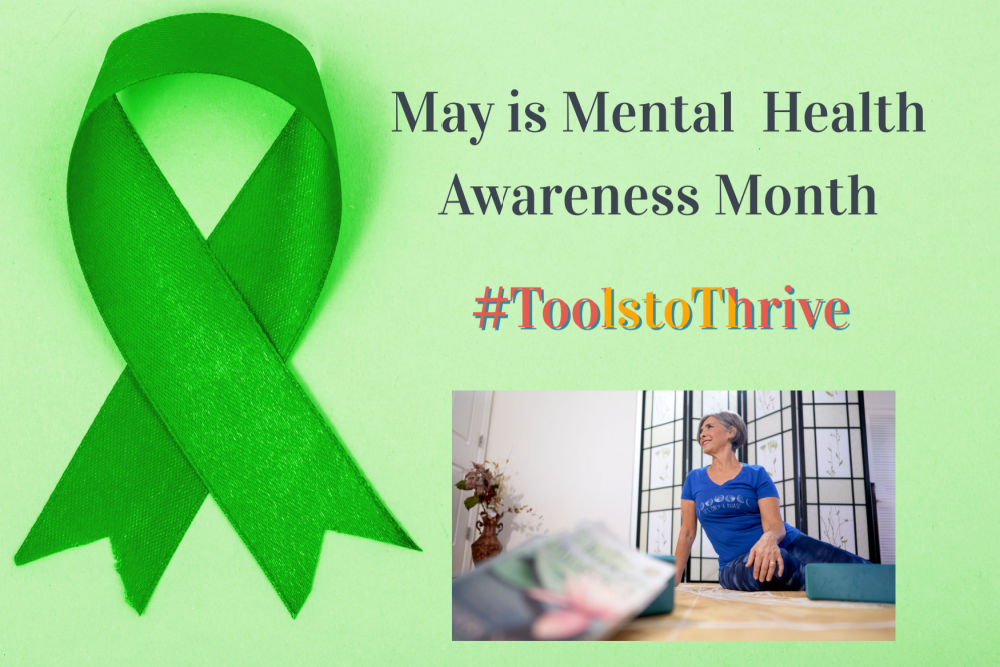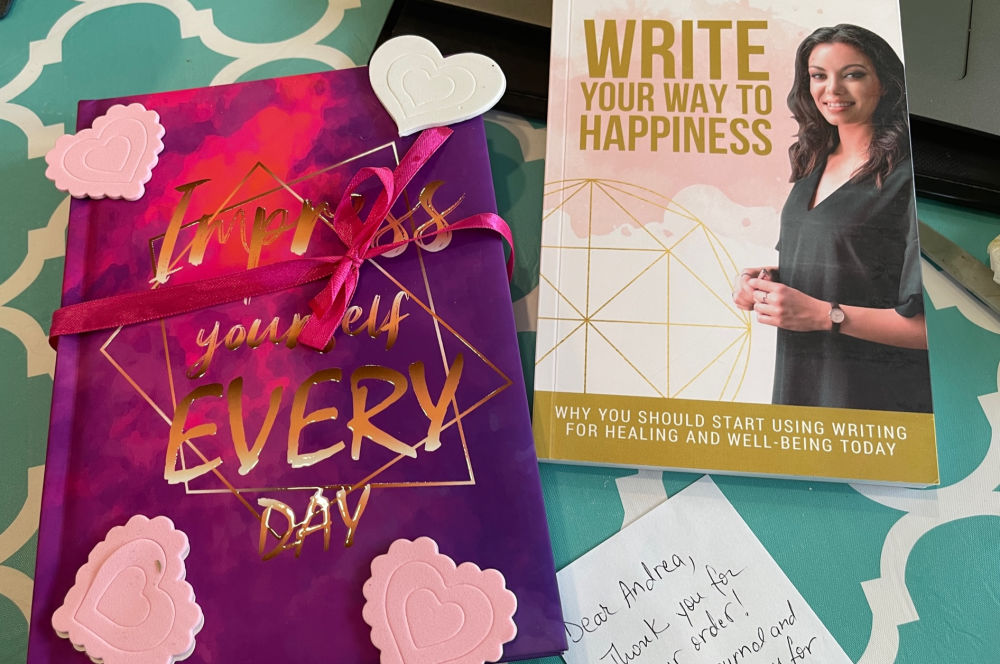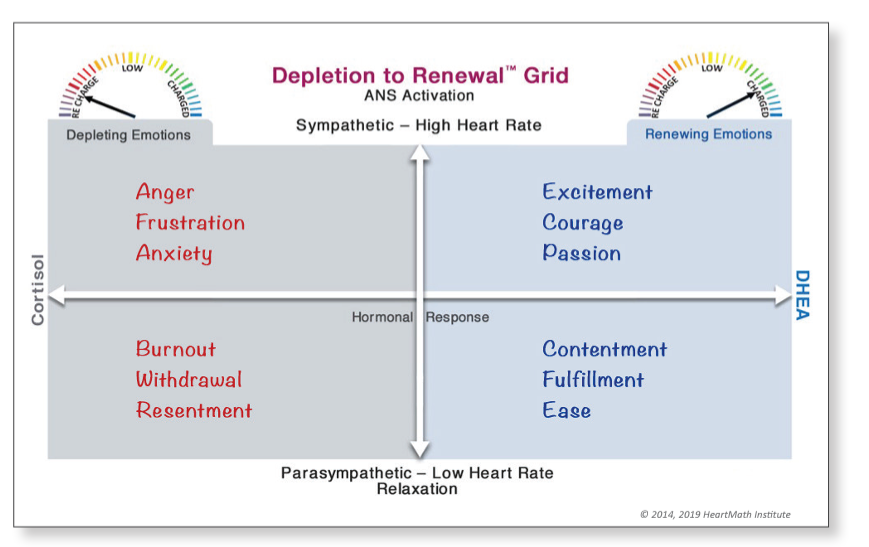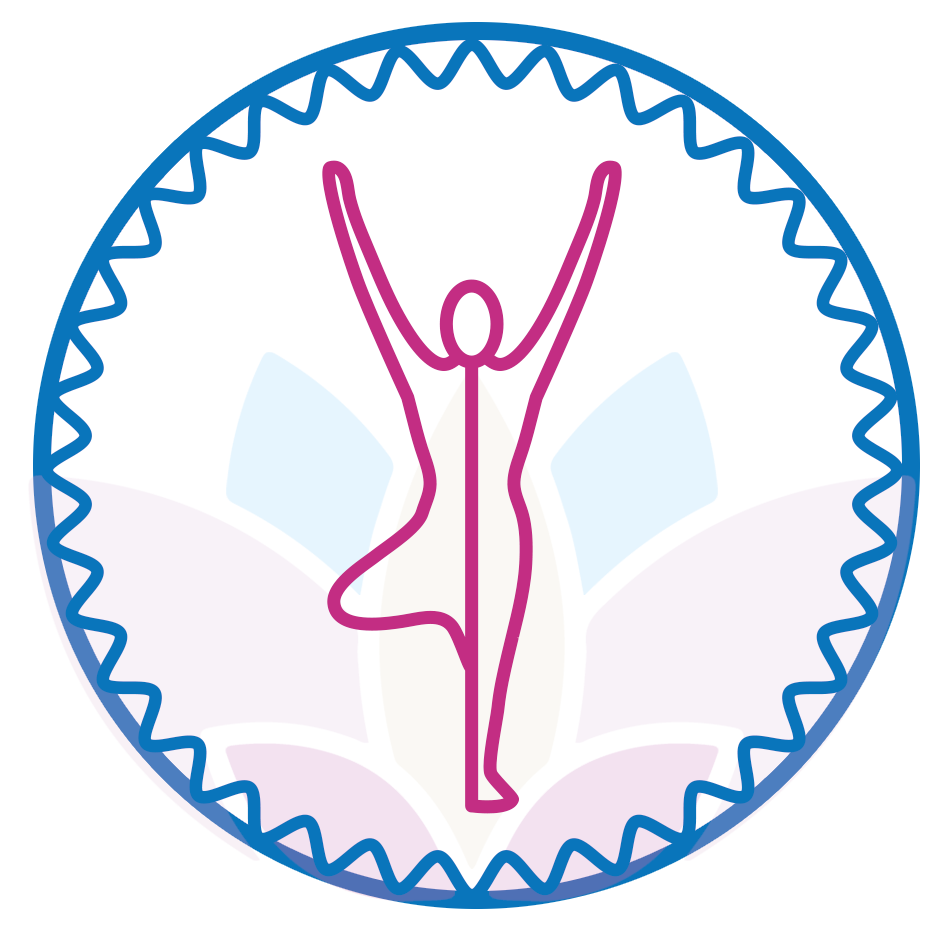
Did you know that May has been Mental Health Awareness Month since the late 1940s?
This year’s theme for Mental Health Awareness Month is #ToolstoThrive. When I was originally diagnosed with anxiety 30 plus years ago, I was not thinking about thriving, I was thinking about surviving. Looking back, I realize that there were many reasons for this narrow approach.
- When I first came face to face with my “mental health issues”, life felt so scary and overwhelming, I could not imagine a future that included thriving.
- My overwhelm was caused, in part, by the way in which mental health issues were viewed at the time by society and handled by western medicine.
- The solutions proposed to me were primarily pharmaceuticals which I could not take due to the negative way I responded to them.
- My physical symptoms were considered “made up” or “all in my head” by many doctors and even some friends and family members.
- It was very embarrassing, to say the least, and could have had many negative career and social consequences, at worst. #StoptheStigma
However, I was one of the lucky ones. I have a husband who was willing to go to extreme lengths to normalize our lives and give me the time and support to heal. I was also lucky that the anti-anxiety medicines made me sick. Not having medicines to lean on led me to search for longer-term, slower, more holistic solutions. It, in fact, lead me to become a yoga teacher, a health coach, and a HeartMath practitioner. And that is how I discovered #ToolstoThrive for myself and my clients.
The national organization Mental Health America, which promotes Mental Health Month recommends the following #ToolstoThrive. These are the same tools I share with my clients. I believe these tools are broader than mental health solutions because they focus on “whole body healing” which includes your physical, physiological, emotional, and mental healing.
- Owning Your Feelings
- Finding the Positive
- Creating Healthy Routines
- Eliminating toxic influences
- Supporting Others
- Connecting with Others

#ToolstoThrive Explained
Owning Your Feelings and Finding the Positive —These two tools were initially hard for me to embrace, because, in part, I felt that finding the positive meant always being positive. Well, that does not work if you want to own your feelings and today you are feeling angry. What I learned to do was recognize and explore “so-called negative or depleting emotions” through Yogic tools, HeartMath, and (more recently) journaling. According to Alexandra Badita, author of Write Your Way to Happiness, “Even though we live in a society where everyone struggles with mental health, it doesn’t mean that we are more open to talking about it.” She adds that often people go to therapists with the mistaken belief that this will fix them. “You’ll spill the beans about your entire life and the therapist will magically solve everything,” she says in her book. This attitude is as unrealistic as believing the medicines the doctors give you are going to heal you. Outside solutions are temporary. The real work takes place within oneself. Whether it’s developing a journaling habit as Badita recommends or many of the tools that I recommend to clients, it is going to require work on the part of the person who is trying to heal. There is no way around it.
I teach my clients HeartMath tools and other nervous system regulation tools to shift their emotions and attitudes to ones that support their own mental health and well-being. In HeartMath we use the depletion to renewal grid. This tool does not deny your feelings but offers you the opportunity to become aware of how those feelings are affecting you physically and mentally. By shifting your physiology through Somatics and HeartMath, you can improve your mental health. But guess what? Just like journaling, if you practice these tools on a regular basis, preferably daily, your chances of healing improve significantly.

More #ToolstoThrive
Creating Healthy Routines— In my view and many others, creating healthy routines is the most empowering tool for mental health and well-being. Routines change your nervous system and your brain by physically altering the nerve pathways or creating new ones that are easier to access. Your anxiety, depression, or any other unhealthy pattern has created grooves or samskaras as they are known in Yoga Therapy. The only way to create new grooves is to have a replacement thought, belief or action. How does one do that? Practicing your new healthier patterns repeatedly every day, no matter what is going on in your life.
As a coach, I have come to realize that failure to practice new healthy routines in the tough times is one of the biggest roadblocks to improving mental health. My best advice is to practice a lot when things are going well, so that when the tough time hits, which it will inevitably, you have developed the “muscle memory” to continue to practice. My other helpful advice is to develop a variety of tools. For instance, if you are not feeling well enough to move your body with some gentle somatic yoga, you have other available even gentler practices such as HeartMath breathing or a simple walking meditation to rely upon. The more varied and the bigger the toolbox is, the more likely you will find a healthy routine that works for you that day.

More #ToolstoThrive
Eliminating Toxic influences—I take a rather broad view of this piece of advice. While many would say this means don’t surround yourself with toxic people, I believe toxins can come in many forms including the use of harmful chemicals in our daily lives on our food, in our homes and in our beauty routines. For several decades, I have chosen to use products that are healthier for me and my family. I think many people are not ready to acknowledge the connection between these harmful substances and their mood and mental and physical health. These products are so ubiquitous and accepted in our modern world that there are huge roadblocks to connecting the dots when it comes to improving mental health. But I can tell you from personal experience, the more in tune with nature I live, the better I feel. Scientific research is catching up with what many of us intuitively have understood for years.
Supporting Others and Connecting with Others—In my view, there is a great deal of overlap and nuance between these two themes. Supporting others works for your mental health if and only if it feeds your soul (see this blog for the difference between compassion and overcare). There is a great deal of research that actions that support others improve your mental health and well-being. And there is just as much research on the short-term and long-term effects of community on mental health. See the article I wrote here on the importance of social connections for longevity.

How are you going to celebrate Mental Health Awareness Month? Will you support a friend in need? Will you self-empower your own healing with new tools like HeartMath, Gentle Somatic Yoga, or Journaling? Join me in developing #ToolstoThrive this month and every month! Reach out if I can help!
Namaste,
Andrea



